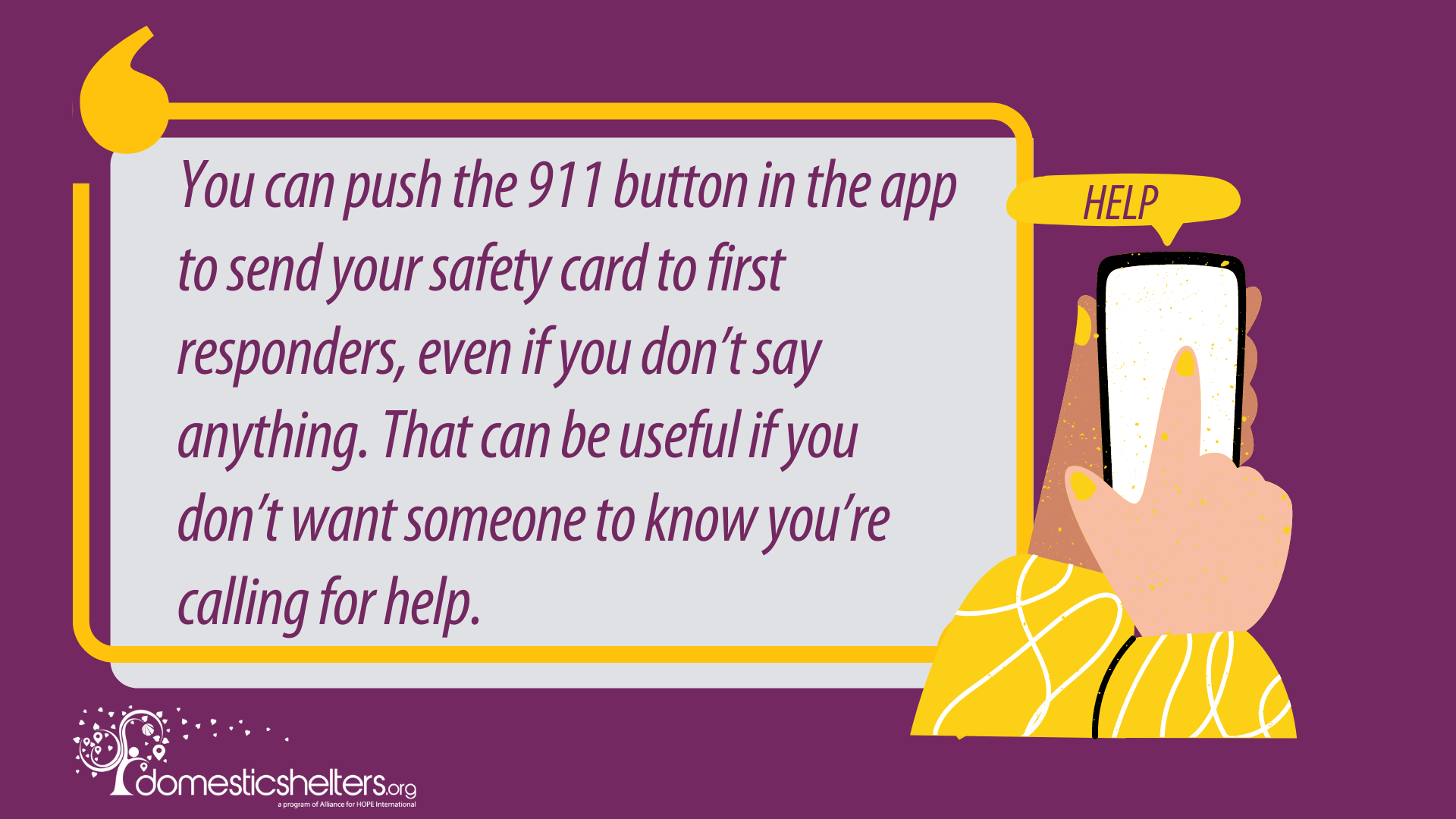1. Select a discrete app icon.

notes
When 911 Can't Find You
Calling for help from a cell phone might make it hard to track you down. These solutions help emergency responders get to you
- Feb 07, 2024

This piece was originally published in 2017. It was updated in 2024.
Back when almost every call to 911 came from a landline, odds were good that first responders knew exactly where that call was coming from. But these days, almost three-quarters of U.S. adults use cell phones for all of their calls. And if you place a 911 call from a cell phone, it can be harder for first responders to pinpoint your location.
Dispatchers can see the number you’re calling from and your approximate location. But if you’re not able to tell a dispatcher your address—which could be the case in domestic violence when survivors don’t want an abuser to know they called 911—it could take longer for responders to reach you.
Solutions like eBodyguard and Smart911, two free smartphone apps, are working to fix that.
Getting Help Wherever You Are
Melissa Hart is the founder and CEO of eBodyguard, a service that’s partnered with DomesticShelters.org. A domestic violence survivor herself, she knows the importance of connecting survivors with the help they need as quickly as possible.
“Our technology utilizes GPS satellites, plus Wi-Fi, plus our own scripts, for location accuracy within several feet and sometimes inches. We’re able to help people no matter where they are in the globe, even in any rural location,” she says.
When you register with eBodyguard, you create a safety card that contains important information such as your identity, an emergency contact name, whether you’re afraid of someone and whether you have a protection order.
You can push the 911 button in the app to send your safety card to first responders, even if you don’t say anything. That can be useful if you don’t want someone to know you’re calling for help.
You can also use voice activation to access eBodyguard if your phone isn’t within arm’s reach.
A Place to Safely Store Important Info
In addition to your safety card, you can add other information to the app, such as:
- Documents
- Media such as footage from a doorbell cam
- Bodycam footage
- Information about family members, pets and vehicles
Whatever you put on your safety card goes to first responders if you call 911. Other information isn’t released unless you choose to release it — it’s a log of your events that stays private until you share it.
The service also has a bodycam feature that you can activate as needed, so it can capture information at the scene. “It’s able to grab exactly what's going on at that moment, and it's extracted into the cloud. It cannot be altered, deleted or destroyed,” Hart says. It helps put a survivor and abuser at the same location, so, the abuser doesn't have an alibi.
Since eBodyguard is approved by the FBI, the information it captures can be authenticated and go into the court system.
You can download the eBodyguard app for Apple or Android devices.

Another Option for Survivors
A service called Smart911 offers a similar solution. It allows people to create an online safety profile that’s tied to their cell phone or home number. The profile is only accessible by 911 operators.
Your profile can tell operators:
- Your home address
- The number of people in your home and their ages
- Any medical conditions or allergies you or the other members of your family may have
- The number and type of pets in your home
- The details and layout of your home, including where the exits are. You can also include a photo of your home
- Any history of domestic violence or weapons that are in the home
- Emergency contacts that a 911 operator can contact for the caller
Other Protections for Survivors
With Smart911, you can only access your profile through a secure log-in using an email address and password, so you have an extra layer of security if you want to keep the information private.
You can also configure your safety profile to say you would like to receive a text if you hang up immediately after you call. That could be useful if you’re in an unsafe situation.
You can include a PIN or secret phrase in the “Notes” section of your profile that can identify you as the person listed in the profile to the 911 operator. A secret phrase, like, “Is Suzy available?” or “I’d like to cancel my dentist appointment for tomorrow” could tell an operator that you’re in danger and need help, without tipping off an abuser who may overhear. It could also help if an abuser tries to call 911 to cancel an emergency response that’s already on the way.
How to Get Connected
Forty states are covered by Smart911 and the company is working to expand coverage nationwide. You can see what coverage is available in your area by signing up.
Even if your area isn’t covered yet, signing up can help protect you if you’re traveling. If you visit an area where Smart911 is offered and call 911 from your cell phone, an operator may still be able to access some of the information you provide, such as emergency contacts and medical history.
The cost of Smart911 is covered by municipalities, so there’s no charge to create your free safety profile online.
Donate and change a life
Your support gives hope and help to victims of domestic violence every day.








